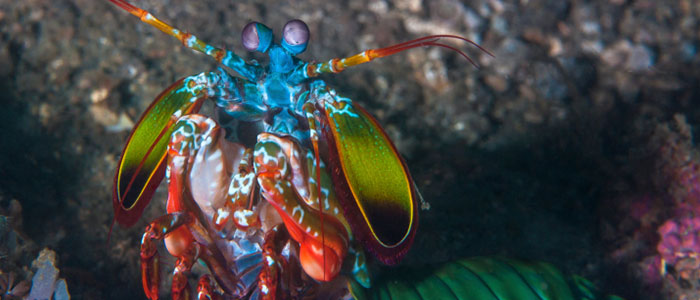
Siegfried and Roy’s white tiger dazzled us with its magic. Shamu, the famous killer white whale at Sea World dances upon the water to the amazement of crowds, and who can forget Benji or Lassie as childhood heroes. Have you ever explored the fascinating world of animal vision? Who wins the prize for the the most advanced visual species of the animal or insect kingdom? The results may surprise you.
We all agree that birds of prey (hawks, eagles, falcons etc.) have the best bionics hands down but have you ever considered the vision of the colossal squid, or the dragon fly, the ogre spider or mantis shrimp?
The colossal squid has an eye larger than any sea animal: it's the size of a basketball! The squid’s eyes and 3-D vision are so astute so that they can spy whales that would be predatory to them.
The dragon fly has incredible vision, better than any other insect. Take for instance the common house fly who has around 6,000 eye facets that give them an astounding panoramic view of the world. Amazingly, dragonflies have 5 times more eye facets than houseflys, giving them 30,000 units of panoramic viewing. With this skill, they can predict where their prey will be and get there before the other insect does, thus the dragon fly comes in as a leader of all insects in the "amazing vision contest“!
Consider the ogre spider next. The ogre spider, out of all other spiders has this unique feature: two large posterior facing eyes with six smaller eyes to see prey even in the dark. It's huge eyes have outstanding night vision, in fact, about 2000 times better than most spiders! This unique portrayal of night vision gives it the edge over many other species in hunting prey.
So how about the mantis shrimp? How can a shrimp have good eyesight you ask? They have the number one most complex visual system of any species known to man. Literally hi-definition vision! They have compound eyes with 16 photoreceptors (humans have 3) and they see all colors of the spectrum including UV and singular & circular polarized light.
This is like an electric 3-D light show on steroids! There is ongoing research on how they can see 3-D with only one eye and how they communicate visually.
Keys to researching different species vision may on day unlock mysteries into the human eye. Only the future will tell what nature may unlock for future vision breakthroughs.
Keep your eye on the tiger and other species for more vision breakthroughs in the future!
The content of this blog cannot be reproduced or duplicated without the express written consent of Eye IQ.
 The BackgroundOver the last several years, research has indicated a strong correlation between the presence of Obstructive...
The BackgroundOver the last several years, research has indicated a strong correlation between the presence of Obstructive...


